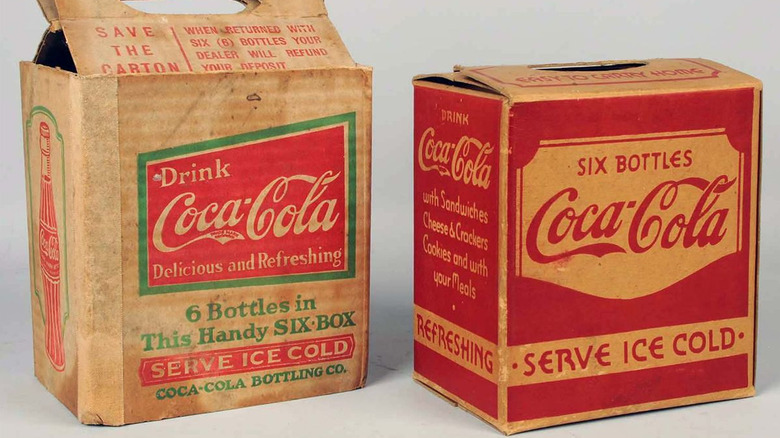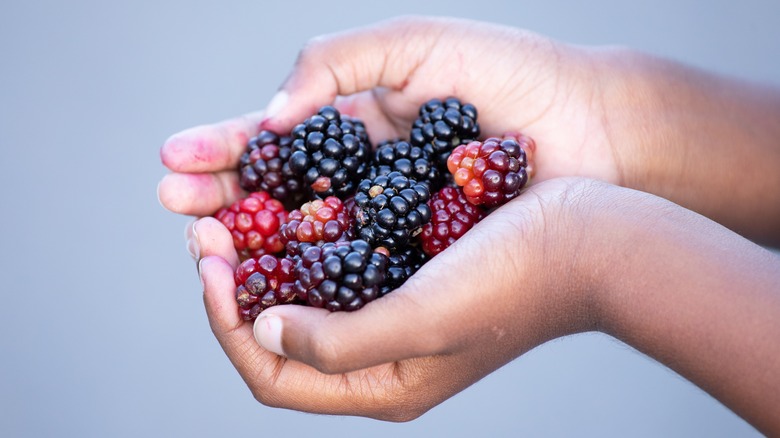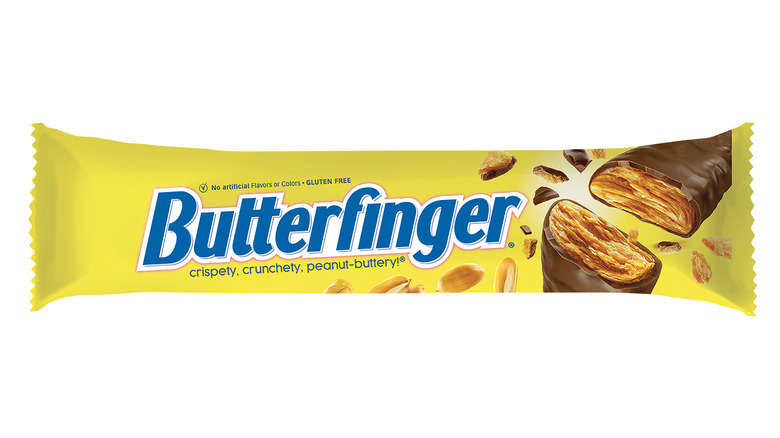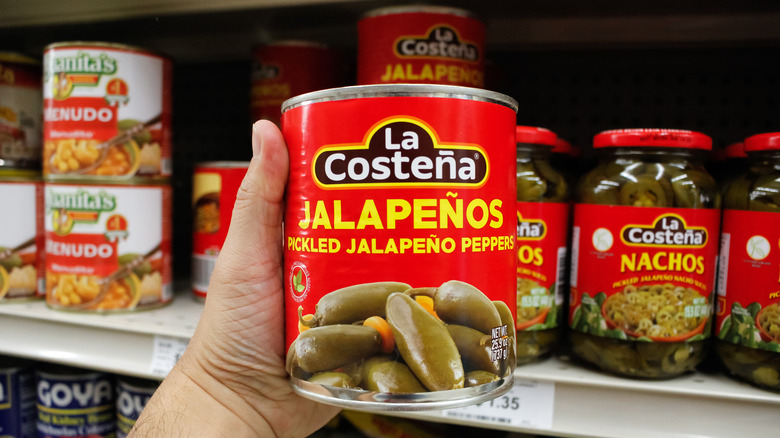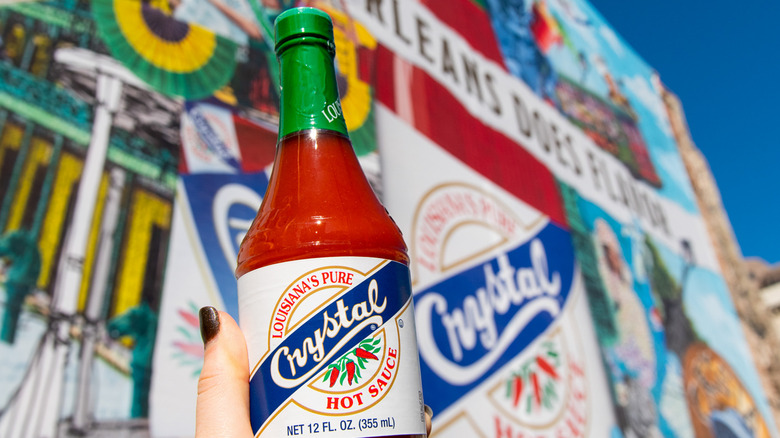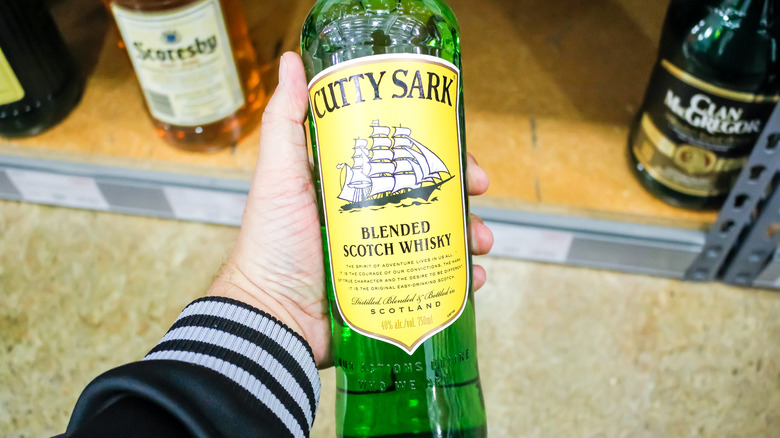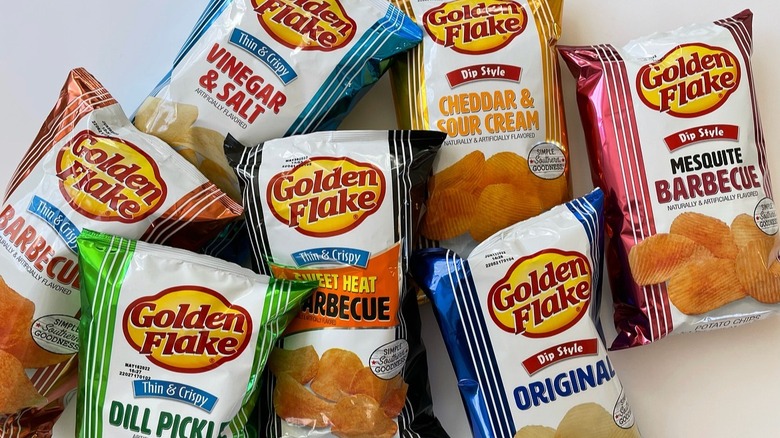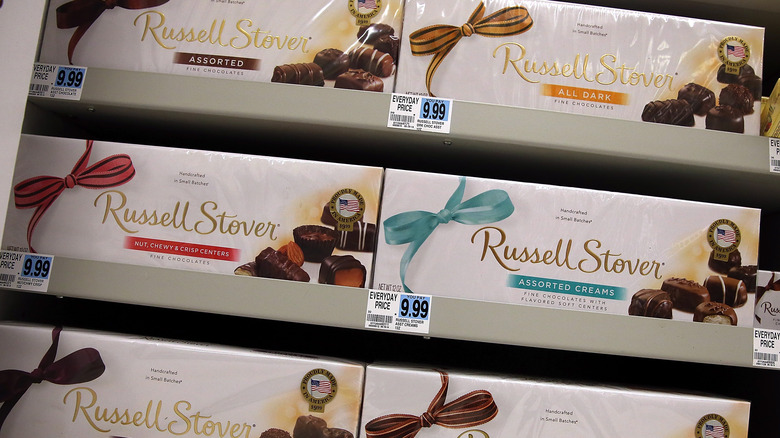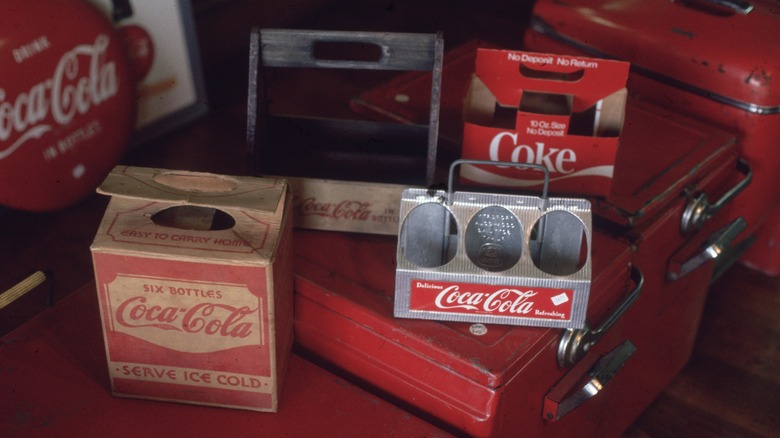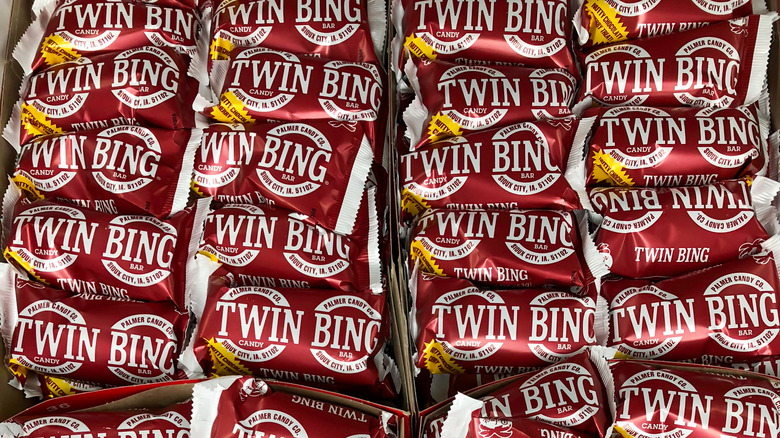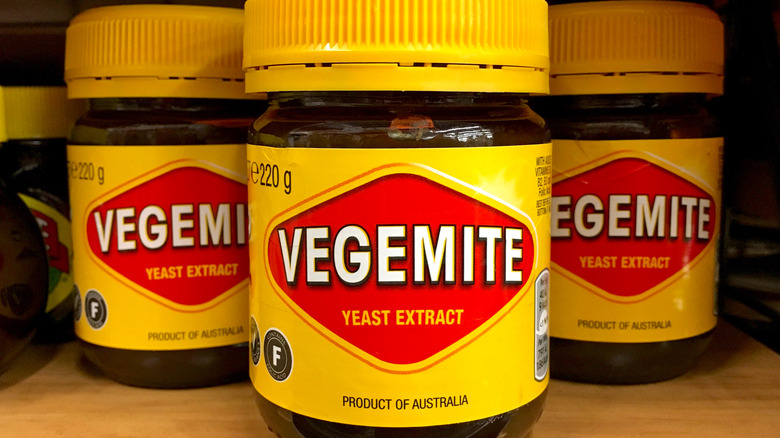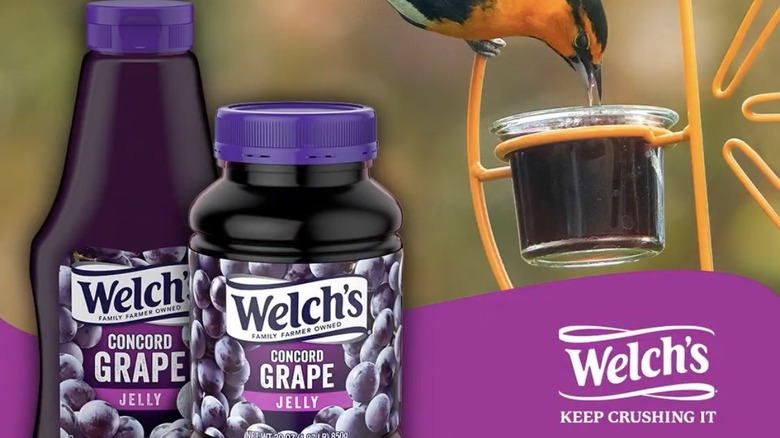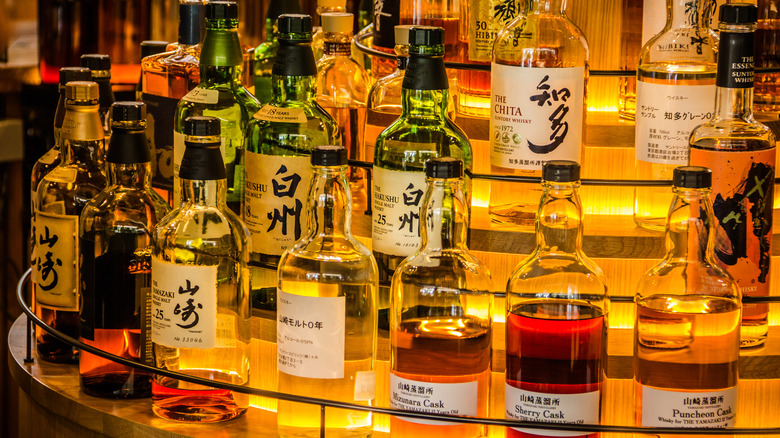12 Food And Drinks Celebrating Their 100th Birthday In 2023
1923 isn't the type of year that conjures up instant memories of milestones in history and culture, but when one examines what was actually invented, conceived, and introduced to society at large, there are some mighty big names that stand out. Some of them are still with us today.
While the year was marked with much tumult, with a devastating earthquake in Japan, an eruption of Mr. Etna, killer hailstones in the USSR, the death of President Harding while in office, and Hitler starting to make trouble in Germany, a lot of life and positive light was beginning to shine bright. The first games and events were held at the Los Angeles Memorial Coliseum, Yankee and Wembley Stadiums, the traffic light was invented, and insulin became widely available, while the Hollywood(land) sign lured many to Southern California, and giants like Charlton Heston, Roy Lichtenstein, Norman Mailer, and Bob Barker were brought into this world.
Not often at the forefront of centennial celebrations are foods and drinks that have endured such a length of time and are still enjoyed to this day. Let's pay tribute to the fine goods and spirits that came to be in 1923 and hopefully will last hundreds of more years into the future. Gather them all together for a picnic, and you'd have one of the tastiest meals of 2023, thanks to these delicious and quench-worthy products from 100 years ago.
Boysenberries
For a cross-pollinated berry that bears his name, Rudolph Boysen got the credit he rightfully deserves, but didn't make any money for giving the world the boysenberry. The farmer moved to Napa Valley and in 1923 created the hybrid, crossing a raspberry, blackberry, loganberry, and perhaps other berries. His wife Margaret later told The Fresno Bee, "Only nature can give the answer to exactly what makes up the Boysenberry."
Boysen moved to Anaheim, replanting his new berry in an orange grove, and moved on with his life, becoming a park superintendent. Eventually, the thumb-sized berries caught the attention of George Darrow of the U.S. Department of Agriculture. He tipped farmer Walter Knott to the discovery, who took pieces of the Anaheim plant, cultivated it at his Knott's Berry Farm, and named the berry in Boysen's honor. The boysenberry is high in antioxidants, vitamin C, vitamin K, and dietary fiber, and by the mid-1930s, it became what The Los Angeles Times called, "the greatest of all berry sensations." It hit its peak in the 1950s but has dwindled in popularity since.
Boysen's granddaughter, Jeanette Boysen Fitzgerald, traced the location of the Anaheim plant to a relative in Merced, propagated from it, and starting in 2018 has carried on the family tradition with the brand Rudy's Original. Boysen's wife Margaret was prophetic back in 1958 when she said, "I think it's nice to have a living memorial such as this to my husband."
Butterfinger
The exact birth year of the Butterfinger candy bar is not really known, but its former parent company, Nestlé, considered 1923 as the year it was first promoted, and even celebrated its "90ish years of awesomeness" in 2013. Ten years prior, on Butterfinger's own website, they claimed that 1928 was the year of its introduction by Curtiss Candy Company, who got the candy's sports-related term moniker through a naming contest.
Regardless of when, the crispy, crunchy, peanut-buttery taste of the Butterfinger was a hit right from the start, when they were dropped by airplane over many American cities. Sold alongside Curtiss candy siblings like Coconut Grove, Buy Jiminy, Moon Spoon, and Easy Aces, the bar ultimately outlasted them all, along with older sister (by two years) Baby Ruth, as the two moved from company to company, including Nabisco (who apparently "lost" the recipe), Nestlé and current owners since 2018, Ferrero.
Butterfinger has been churned out as ice cream as far back as the 1930s and later in Dairy Queen Blizzards, to BBs, Bites, Peanut Butter Cups, Crisp, Stix, Snackerz, Naked, Dark, Buzz, and for one April Fools Day — simply The Finger. The yellow-wrapped bar co-starred with Natalie Wood in 1962's "Gypsy," later appeared in "Die Hard with a Vengeance," "Seinfeld," and "Mad Men," and has been name-dropped in songs by Lil Yachty, Tyler the Creator, and Adam Sandler. Their finest pop culture pairing came about when took a chance on a young Bart Simpson as their spokesbrat, who popularized the phrase, "Nobody lays a finger on my Butterfinger."
La Costeña
Little did Vicente López Resines know that when he bought a Mexico City grocery store called La Costeña in 1923 that he'd later head a company that would control over 60% of the world's chile market. López's rise started by bottling and preserving jalapeño peppers in glass jars with natural alcohol and vinegar. In 1937, he opened a canning plant which greatly expanded the business, eventually reaching every corner and mouth in Mexico. Mexican chef Pati Jinich wrote in Southern Living of the staple in her pantry, "I've got enough cans of La Costeña pickled jalapeños to last me for weeks. The chiles are pickled in a seasoned brine that can shine in sauces and more."
To satisfy the burgeoning tastes for Mexican peppers and sauces to their neighbors to the north, the company expanded to the United States in 1975 under the name Vilore (composed of the first two letters of the founder's first, middle, and last names). La Costeña further expanded their offerings by acquiring Faribault Foods, Arizona Canning Company, and Sabormex and now export over 400 goods like peppers, pickled carrots, salsas, beans, salad dressings, mayonnaise, and more to over 40 countries around the world.
In honor of the company's historical anniversary, current La Costeña CEO Rafael Celorio told Abasto Magazine, "We thank Mexican families for trusting us, our flavor, and our quality. This first centennial is thanks to them for choosing us in their pantries, and we are going together for 100 years more, betting on Mexico, our people, and our gastronomy."
Crystal Hot Sauce
Crystal Hot Sauce was born out of something cold — a New Orleans sno-ball syrup company called Mill's Fruit Products that came into the ownership of Alvin Baumer. Baumer found a recipe for a hot sauce named Crystal Pure in a drawer and made his own version starting in 1923. 100 years on, a third generation of Baumers is still bottling ground-aged red cayenne peppers with distilled vinegar and salt.
While Crystal has an in-state rival in Tabasco, they are an integral flavor for all of New Orleans, sponsoring hometown teams like the Saints, appearing on its "NCIS", and is found in restaurants and kitchens the world over. Crystal enlivens dishes like crawfish, gumbo, and oysters, and of course, creates the perfect Bloody Mary. Chefs like Graham Elliot, Valerie Bertinelli, and Giada De Laurentiis are fans, and one diehard user even had the bright idea to create a Crystal Hot Sauce fountain.
Baumer Foods is more than just Crystal Hot Sauce, as they all sell other sauces, including buffalo, steak, Worcestershire, soy, teriyaki, and marinades. At one point in their history, they canned vegetables and shrimp and were well known for their jellies and jams, which were found in World War II rations and so beloved by soldiers who would later come to visit the factory. Hurricane Katrina destroyed the plant and the famous "Crystal Preserves" sign above it, and while the company relocated outside of the city, the sign was faithfully reproduced and placed atop an apartment building that stands in its place, fittingly called The Preserve.
Cutty Sark
The Cutty Sark was a three-masted British tea clipper built in 1869 that sailed the world round, before docking for good in 1922. A year later, wine and spirits makers Berry Bros. & Rudd and artist James McBey had an enlightening lunch where they came up with the idea for a lighter blended Scotch Whisky, using the retired tea clipper's name and likeness for the famous green bottle with the yellow label (it was supposed to be cream, but there was a printing error).
Conquering the American market was always a goal, and the roots of doing so were sewn during prohibition thanks to rum runner Bill "Real" McCoy. By 1961, they became the "top-selling Scotch Whisky in the United States," proudly advertising as such in Great Britain. The Whisky celebrated the coronation of George VI, was enjoyed on Mercury 9 by astronaut Gordon Cooper, and was the drink of choice of President Lyndon B. Johnson, who even had the Secret Service refilling cups for the Commander in Chief on the go.
Pitchmen included Ted "Captain Outrageous" Turner, B.B. King, Chuck Yeager, John Z. DeLorean, and Philip Glass. For a decade they sponsored a men's fashion awards show. Rounds of the drink were ordered up on "Raging Bull," "Goodfellas," "The Sopranos," "Cheers," "Green Book," and "Cobra Kai," and had its praises sung by Aesop Rock, KT Tunstall, and Vic Chestnut, who admitted, "The only thing I been a-sleepin' with is the Cutty Sark." To honor their 100th year, a limited edition bottle was released in 2023.
Golden Flake
Birmingham, Alabama is known as "The Magic City" and in 1923, two enterprising snack makers, Mose Lischkoff and Frank Mosher, used that nickname to start a "Foods" company in the basement of Hill's grocery store that included peanuts, malt extract, horseradish, and potato chips. Their "fast selling line" of Golden Flake chips became the company's crispy calling card, and after a couple of different owners, under the Bashinsky family's stewardship, Magic City Foods was renamed Golden Flake, Inc. in 1957.
"The South's Original Potato Chip" became the Southeastern Conference's first corporate sponsor, and later the official chip of Talladega Superspeedway. Alabama's head football coach Paul "Bear" Bryant was such a fan that he appeared on chip canisters, had his eponymous show sponsored by the company along with "great pair" Coca-Cola, and appeared in their TV ads, saying such inspirational lines as, "You'll turn up a winner every time." They once had an eight-foot mascot monster called The Golden Flake Gobbler, who was created by fellow southern gentlemen and master creature creator Jim Henson.
Golden Flake has created a wide array of chip offerings over the years, as an early adopter of the dill pickle flavor, introducing a caffeine-fueled line called NRG, and one of their most popular — Sweet Heat Barbecue. In 2016, Utz acquired Golden Flake, to which CEO Mark McCutcheon said in a press release that the merger would allow the "brand to continue to grow in our core Southeastern markets while expanding the product selections for our consumers."
Russell Stover Chocolates
Russell Stover had a brief success providing the chocolate for the innovative frozen Eskimo Pie, but mounting legal costs enforcing his co-creation led him to go into business with his wife Clara. In 1923, they started making confections together in their Denver kitchen with copper pots, and as Clara explained to The Kansas City Star, choose "a name that would indicate our candy was made by hand and not by machinery, yet the word 'home-made' was overworked" — Mrs. Stover's Bungalow Candies.
The Stovers' chocolate boxes featured their bungalow home and were delivered by motorcycle with a sidecar with a replica of the home. Retail stores followed, and by 1928, their first factory in Kansas City, Missouri was cranking out supply for the demand. In 1943, the company was officially renamed Russell Stover Candies, but the chocolatiers often paid homage to Clara and her contributions in the decades that followed. The company acquired Whitman's in 1993, and the two merged with Lindt & Sprüngli in 2014 to become the third largest chocolate makers in the United States.
As an American icon, it made perfect sense that Forrest Gump would be holding a Russell Stover box while reciting the classic line, "Life is like a box of chocolates, you never know what you're gonna get." Although, Co-president Tom Ward disagrees with Forrest's mother, telling American Profile "What you're gonna get is simply the world's best candy." Another perfect match for the company was providing chocolates, cake, and favors for the union between Russell and Stover families in 2020.
The six-pack carrier
While it's possible that another company or individual created the six-pack carrier, none have seemed to come forward to challenge the notion that Coca-Cola was the first to bring it to the wider market in 1923. Prior to its introduction, a consumer's choice to take the soda in the contour bottle home was to buy them individually or in the case of 24.
Launched and labeled as the "6-Box," this "handy" new carrier was advertised as "convenient to handle as a box of crackers," and is perfect for "an automobile tour or for a picnic." Coca-Cola went to great lengths advertising their new holder that would lead to even higher sales and created a 32-page booklet outlining to retailers how to box, promote and deliver the goods. Over time, the box evolved into wood, aluminum, plastic, and cardboard forms. The beer industry jumped in on the fun in 1943, with National "Natty Bo" Bohemian credited as the first to introduce an alcoholic six-pack.
Coca-Cola has always been more than happy to fill their brown liquid in any delivery format, from the aluminum can in the 1960s (and later pressurized ones that made it into space) to the plastic two-liters in the 1970s (following Pepsi's lead). Their 12-pack of cans came in an awkward cardboard "suitcase," but they completely changed the industry when they adapted the "fridge pack" in the early 21st century, making it easier for their customers to store, enjoy, and buy more of their products.
Twin Bing
The Palmer Candy Company has been making life sweeter since 1878, but the Sioux City, Iowa confectioners truly got into the swing of things when they joined the candy bar craze of the 1920s and introduced the Bing. Fifth-generation owner Marty Palmer confessed to The Des Moines Register, "There are a dozen theories, but no one really knows" where the name Bing came from. In 1923, the handmade candy came in four flavors — maple, vanilla, pineapple, and cherry, although the first three didn't sell as well and were dropped from the line-up, leaving the cherry Bing to form a friendly rivalry with the similarly tasting Cherry Mash (born 1918). It would take decades for Palmer to conjure up new flavors, which have included peanut butter, s'mores, caramel, and even a red, white, and blue Patriotic one.
Things got twice as nice for the company in 1969 when they decided to double up the amount of Bings to a package with the Twin Bing. Marty Palmer told the Sioux City Journal that the more vending-machine-friendly bar "took off like a heartbeat," and has found buyers for parents of twins, and fans for those who also cheered for the Minnesota baseball team. The Palmer Candy Company later tripled the pleasure with a three-humped version called the King Bing, and to mark the 75th birthday of the original Bing, they created a 150-pound Twin Bing. Recently, the Twin Bing burst out of the wrapper and has been infused in coffee, ice cream, and even a stout beer.
Vegemite
Vegemite is a thick black paste made from leftover brewers' yeast extract, which is rich in B Vitamins. Developed by Dr. Cyril P. Callister, it was unleashed to Australia in 1923 by the Fred Walker Company as "The World's Wonder Food." While Vegemite got its name in a contest, it was changed five years later to Parwill to try and stand out from the more popular Marmite. The name eventually reverted back, and it would not be forgotten after it became a rationed staple during World War II. It has since been paired with smoothies, Pizza Hut pizza, meat pies, and even chocolate. Luckily the iced coffee and energy drink fusions were just sick April Fools jokes.
While its acquired taste failed to catch on in America in 1970, it was put on the world map in 1981 by the hit Men at Work song "Down Under." Lead singer Colin Hay has said "it's very annoying" how many people have asked him what a Vegemite sandwich is that 35 years later, he finally demonstrated how to make one ... something Paul Hogan has also done. Olivia Newton-John christened her Aussie-themed LA boutique Koala Blue with a bottle of Vegemite, which Chris Hemsworth can identify blindfolded. Margot Robbie said the spreading of it on toast was "the sounds of my childhood," and the band King Gizzard & the Lizard Wizard made a lot of noise with their ode to the product. With a reputation that never truly expires, Vegemite made a cameo appearance in the end of the world bunker in the 2019 film "The Tomorrow Man."
Welch's Concord Grape Jelly
The Welch family name became synonymous with the grape starting in 1869 when Vineland (fitting), New Jersey minister and dentist Dr. Thomas Barnwell Welch introduced a non-alcoholic substitute for sacramental wine. Originally called Dr. Welch's Unfermented Wine, the drink made from Concord grapes was renamed Dr. Welch's Grape Juice in 1890, and had its coming out party three years later at the World's Fair in Chicago.
While the jams and jellies date back centuries, there are mentions of a grape jelly made by Welch's as far back as 1904, and their 1918 jam called Grapelade was a World War I "revelation" that helped soldiers "win the war." According to Welch's and others, the official year they introduced their Concord Grape Jelly was 1923, and with modern marvels like sliced bread and peanut butter, it became a household staple in America, and then the world over.
Fred Flinstone was a lover (and pitchman) of Welch's jelly, and he was just one of many pop culture icons like Howdy Doody, Disneg, Peanuts, the Muppets, and Pokémon to adorn collectible mason jars. However, it's still unclear if Biggie Smalls was rapping about the jelly, juice, or soda in his 1994 classic "Big Poppa." Welch's went with less of a mess when they became the first in the industry in 1985 to debut squeezable bottles, and sold other types of jellies, jams, and preserves, from apple to raspberry and orange marmalade. Today, they only offer varieties of grape and strawberry, which proposed to Skippy Peanut Butter on Valentine's Day 2023. (They said yes.)
The Yamazaki Distillery
Inspired by Scotch Whisky, Shinjiro Torii wanted to "create an original Japanese Whisky blessed with the riches of Japanese nature and 'Monozukuri' craftsmanship," and set up the Yamazaki Distillery outside of Kyoto, where three rivers converge to create soft water and the perfect climate. Established in 1923, Yamazaki was Japan's first and oldest malt whisky distillery, and under the label The House of Suntory, they went on to produce prized whiskeys, gins, vodkas, teas, and various other beverages.
Before the rest of the planet became aware of Suntory and their fine spirits, the company employed some of the most beloved actors and entertainers to promote the brand back home, including Sean Connery, Keanu Reeves, Duran Duran, Sammy Davis Jr, Ray Charles, et al. Everything changed in 2003 when the Yamazaki 12 Years Old was bestowed a gold medal at the International Spirits Challenge, becoming the first Japanese whisky to do so, and then saw Bill Murray "make it Suntory time" in Sofia Coppola's "Lost in Translation." A dozen years later, the Yamazaki Distillery, tasting room, and museum was welcoming 130,000 visitors a year, many from abroad.
As for what's next for Suntory, Makoto Sumita, General Manager of Quality Communication told Traveler, "Our goal is continuous refinement, always trying to make the whisky better than it was even ten years ago. We always try to put more innovation into it. The whisky-making process around the world is nearly the same, but Suntory is always trying to add something to it."
